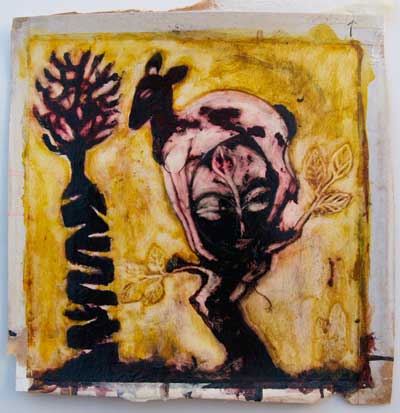‘The street scenes in Newlyn lack nothing of subject for the painter,’ reported the young Frank Richards from the Cornish art colony in 1895; ‘paved with cobblestone, some of the narrow streets are occasionally strewn over with fishheads and entrails, so that one’s progress in going “up” or “down”-along is sometimes considerably facilitated by an alarmingly quick slide to an unexpected destination.’
Thirty-six years earlier, Brunel’s bridge across the Tamar had connected England’s westernmost tip to the railway system, speeding the transport of fish one way and tourists the other. And, as elsewhere in Europe, before the tourists came the plein-air painters. The first to settle in Newlyn in 1882 were a bunch of Brummies led by Walter Langley, but it was the half-French Stanhope Forbes who put the fishing village on the cultural map with his ‘A Fish Sale on a Cornish Beach’ (1885). The picture caused a sensation at the Royal Academy, setting a trend for Cornish social realism re-examined in Two Temple Place’s forthcoming exhibition Amongst Heroes: the artist in working Cornwall (26 January to 14 April).

Get Britain's best politics newsletters
Register to get The Spectator's insight and opinion straight to your inbox. You can then read two free articles each week.
Already a subscriber? Log in






Comments
Join the debate for just $5 for 3 months
Be part of the conversation with other Spectator readers by getting your first three months for $5.
UNLOCK ACCESS Just $5 for 3 monthsAlready a subscriber? Log in